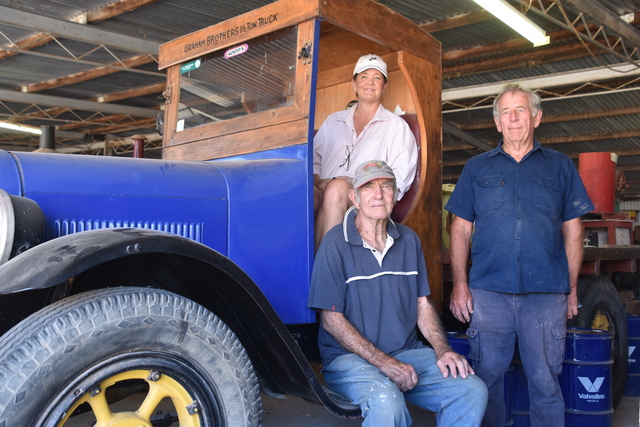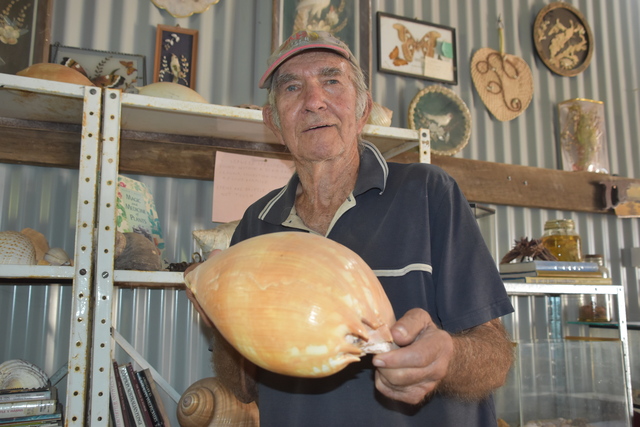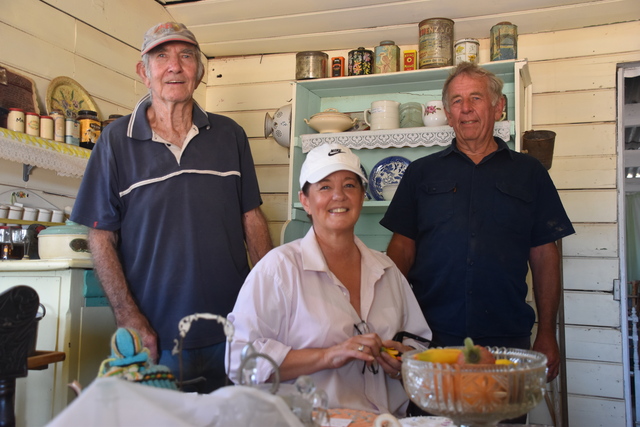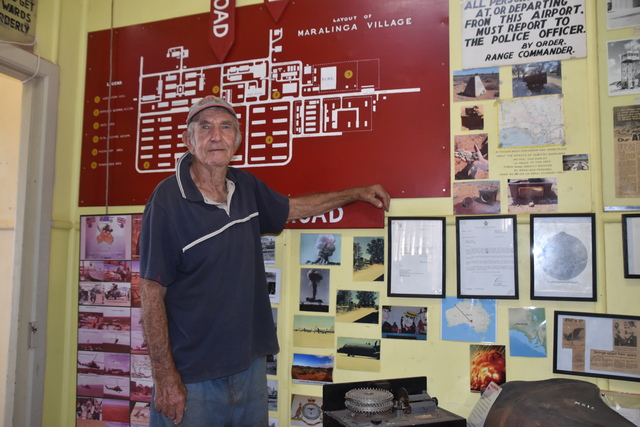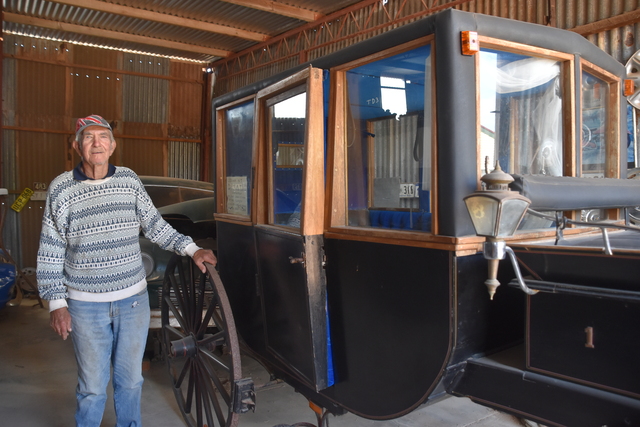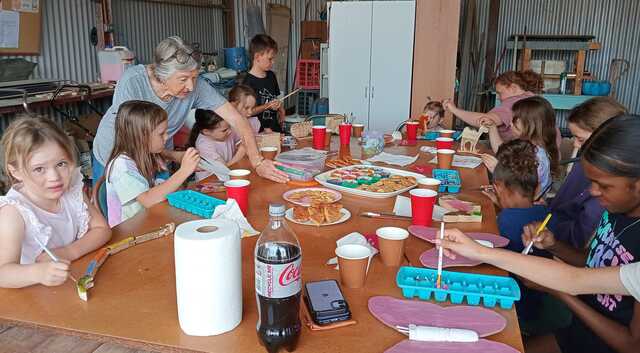An interest in preserving Far West history now and for generations to come is fuelling the dedicated cohort of Ceduna School House Museum volunteers.
From the instant you step foot inside the Ceduna School House Museum you can sense the whispers of Far West history exuding from all directions.
Maybe it is the creaky old wooden flooring that does it; or perhaps the building itself, converted from an old school house and headmaster’s residence that opened in 1914 and last hosted teachers imparting their wisdom on young minds a little more than a decade later.
Yet it is likely because on every wall and in every corner the museum is equipped with a vast snapshot of life in the district over the past two centuries.
Helping to preserve the district’s rich history for generations to come is a group of dedicated volunteers.
They are led by museum president Allan Lowe, a history aficionado who, by his count, has donated 30 to 40 per cent of the items on display – ranging from shells to classic vehicles, and just about everything in between.
By Allan’s count, he has donated 160 radios alone.
“I am probably one of the bigger collectors in the state,” he laughed.
“Most of our items are donated by local people, of which we are thankful.”
Allan is unequivocally passionate about the museum and its place within the Ceduna community.
After all, he has been there since the beginning.
Ken Wright was the museum’s first president when it opened in 1980, but “Tubba” soon took over and for the past 43 years has been dedicated to preserving history and giving visitors something to look forward to upon their visit.
And there is plenty to see. Inside the main building are various household and community items, a small library, medical room and one of the museum’s most exclusive displays.
“The Maralinga room is quite unique, you wouldn’t find much else around aside from the collection up there [at Maralinga],” Tubba said.
The museum doesn’t stop once you reach the back door.
The main building simply scratches the surface, for there are a host of buildings and sheds outside, each telling their own tale.
Farming machinery and vehicles are on display, so too the Flossie Jones Cottage complete with furnishings, a post office, Denial Bay Gaol cell, church, classroom, land and marine animals, plus displays of clothing and technology through the decades.
There is so much on offer, in fact, that the committee has had to turn some larger items down due to a lack of space.
“There are so many items that I like,” Allan said.
“I quite like the horse-drawn vehicles and the phonographs – before they came long there was no way to record sound.”
But what it comes down to, for Allan, is a love of history.
“I enjoy preserving local history,” he said.
“I am a collector and enjoy the chase – there is always something different and new.
“Besides, I have got to have a hobby!”
Allan is one of almost 20 volunteers involved with the Ceduna museum.
Numbers are good, Tubba said, but the concern for him was the age of the volunteer group.
Allan is 81 and there are another seven volunteers aged 80 to 85; another eight are in their 70s. Only three are younger.
“The age of our volunteer base could be an issue,” he said.
“Our old ones are not going to be around for very long.”
The museum is open seven times a week across six days, with volunteers doing as many shifts as possible to fit their schedule.
Tubba does three shifts a week – a little more than the two hours the museum is open to visitors, to open and lock rooms and sheds.
Factoring in more than four decades of involvement, he calculated spending north of 20,000 hours in the museum.
Volunteers are also making sure the site is clean and tidy, or sorting through collections, with busy bees.
Penny Brace has not put in anywhere near as many hours as Tubba, but her contributions are just as valuable.
A relative museum newcomer, Penny has been part of the group for the past year.
“I love history, I love museums and approached them to get involved,” she said.
Penny is the brainchild behind the museum’s push to have more children engaged and interacting with the museum.
The Kids Fun Club sees children attend the museum and get involved in a range of activities.
“We have had the kids coming in over the past nine months,” Penny said.
“It has grown in that time and we have a waiting list for when we have Craft Corner.
“The first youth volunteer has also just finished his ‘apprenticeship’ to become a busy bee.”
The idea was sparked, she said, when a grandmother came through the museum with her nine-year-old grandson.
Penny said getting children involved was vital to keep the site operating in years to come.
“Without children getting involved we won’t have a museum,” she said.
“We need to get them having fun with their history and learning. They are the next generation to take over.
“If we can encourage kids, we can encourage parents and then they could become volunteers.”
The kids club runs about every six weeks, more in school holidays, with Penny hoping to get a firm plan in place to run it regularly.
Activities are free and Penny thanked the Ceduna community for ensuring that was a possibility.
“The community as a whole – children, parents and others – are supporting us 110 per cent with donations for the craft kids to continue,” she said.
“We don’t want to charge and everyone has been so kind with their donations.”
Tubba was pleased with what Penny has been able to achieve.
“We have been getting in a lot of kids who have never been here before, and they tell mum and dad about it.”
Numbers, on the whole, are rising.
Tubba said the museum is attracting about 2000 visitors a year, up from what it was a decade ago.
“The biggest problem is people think that since it is a school house museum that there will be a few photos of ex-students and that’s it,” he claimed.
“Then once they get here they are quite wrapt with what is on display.”
Tubba reiterated the importance of preserving history, noting the Ceduna museum – and similar ones across Eyre Peninsula – were vital to their community.
“People spend a fortune at school teaching the kids and we do it here for nothing!
“A museum is part of education and learning and is the same right across Eyre Peninsula towns.”
He urged the community to ensure it got behind what it has, to see it continue to tell vibrant stories of yesteryear.
“Some people have lived here their whole life and still not had a look at the museum, so come along and take an interest in what we are doing.”

